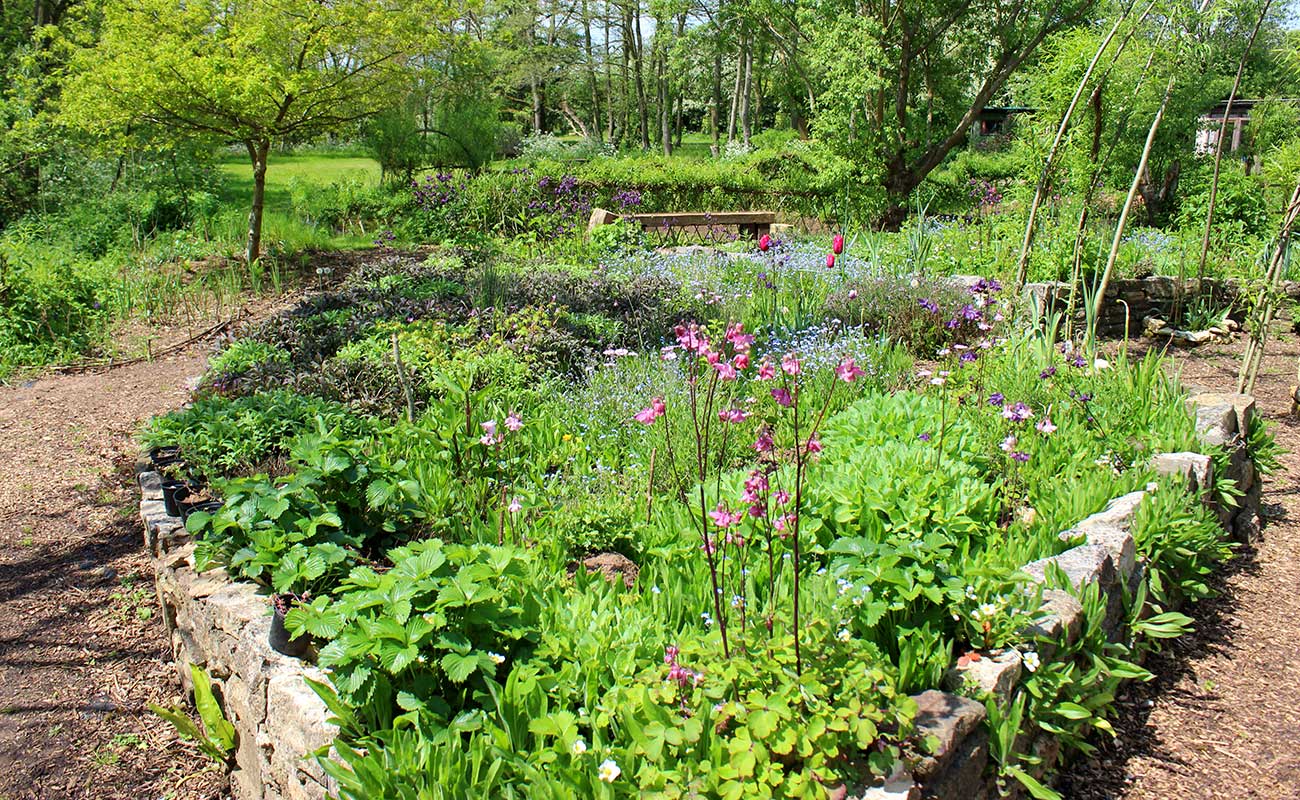ARTICLE Jason Burgess
Rambling, romantic and informal are not exactly list-topping keywords for millennial gardeners used to clean architectural lines. But for owners of period homes or practical green thumbed types who enjoy unstructured backyard whimsy fused with utilitarian purpose, a Colonial Revival style garden will tick all the boxes.
When the first European settlers arrived in New Zealand gardening for them was as much about adapting to new environments as it was about imposing old ways. That meant learning to grow food in hostile landscapes and getting to grips with forests of ‘foreign’ plants while improvising with whatever resources happened to be at-hand. Initially settlers relied on food grown by Māori and by trading with local iwi vicariously began to get a handle on Pacific gardening practises.
Early colonial gardeners mostly grew vegetables, fruit, edible and medicinal herbs. These came from the seeds, and cuttings they brought with them. This collision of classical gardening tradition, indigenous knowledge and rustic initiative would soon morph into something new and distinctly Kiwi.

As time, money, plant choices, and sometimes water, was in short supply few could afford to lay a lawn. Most early gardens were formally divided into raised plant beds, either square or rectangle and accessed by a central swept-dirt, gravel or shell path. Imported crops like potatoes, cabbage, silverbeet, carrots, onions and rhubarb grew easily throughout much of the country and as a treat, peas and strawberries were often planted in time for a Christmas harvest.
Once established, settlers sought some cheering ornamental shrubs from ‘home.’ Among them were, hollyhocks, fuchsias, geraniums, marigolds, pansies, sweet Williams, jasmine, honeysuckle, violets and roses of all types. These were grown in narrow borders at the front of the house, seen through and above white picket fences, and were also used to frame pathways. Later came lawns, which were frequently inset with flowerbed islands filled with a mix of natives and flowering exotics.
Today’s backyards may not be so generously sized but aspects of colonial gardening styles can still be applied to suit any site. Raised planting beds make great sense for ease of access, screening and spatial impact. Rough sewn railway sleeper boxing offers an instant rustic feel as will low walls formed with rocks. Borders of herbs or groomed buxus will help define edges and provide bone structure for other sprawling plants. If space is no barrier, beds could be laid in geometric patterns to create added interest and perspectives.

In each bed allow for a variety of shrubs, flowers, vegetables, herbs and / or fruits. Give thought to the mature height of the chosen plants and grade your garden from high to low to get a sense of spacing, shade and over all look. Avoid planting in straight lines or defined patterns the aim is to create a cascade of weaving foliage, augmented by bright-colored highlights. If adding vegetables to the mix, then they will need to be rotated annually.
Lily ponds, herb gardens and rockeries can be shaped to suit your site and used to transform every aspect of your garden into a series of eye-catching zones. Shrubberies too were an integral part of late Victorian gardens. Like a landscape within a landscape, shrubberies can actually make a garden look larger and provide excellent screening from the street. Add some architectural coloured flaxes, cabbage trees and ferns for a sub-tropical feel.
Sunken patios, gazebos, pergolas and arbors draped in climbing wisteria, fruit vines or roses, all provide screening for intimate spaces. Judiciously placed trellis can also be used to create seclusion while providing vertical planting options for smaller gardens. For definition and added privacy frame open seating areas with thick flower edges or box clipped hedges. Balconies and porches adjacent to the home can become extensions of the garden, to be adorned with climbers and creepers for ornamentation, shade and screening.

There is a certain amount of eclecticism to a colonial style garden. Sure public gardens like Rotorua Museum and Albert Park illustrate colonial formality at its peak, but in private places gardeners indulged all manner of fancies to achieve their desired look. In the early days manuka poles were tied to together to create arches and pergolas. Paving media was usually determined by whatever materials a region could easily offer, anything from gravel to brick, cobblestones and shells. Out of that arose a trend for “crazy paving’ using odd shape stones. Paths that once formally followed straight lines became gently curving to soften the hard lines of period architecture.
Do not be afraid to add a few classical focal points either. Things like sundials, fountains and birdbaths, became de rigueur at the turn of the 20th Century as emphasis shifted from purely functional landscaping to more decorative styles.
As with any great garden design a colonial revival style garden is the sum of all its parts. So before getting too lost in individual elements it pays to think cohesively from the get go. Consult your local Zones specialist to help you bring it all together to recreate local history in a contemporary style.
Other popular styles include Spanish style gardens and English style gardens.
Get in touch with Zones to discuss your landscaping project
If you would like to discuss options and ideas for your outdoor landscaping project, please use the enquiry form on this page to provide us with your contact details. We will get in touch with you at a time that suits you to discuss your landscaping design and build. If you would like to provide us with more information about your project, we have a more comprehensive enquiry form on our "Get in touch" page too.
*All information is believed to be true at time of publishing and is subject to change.
Read Next
All Zones Landscaping franchises are independently owned and operated.
Processing...
Are you ready to discuss your ideas?
Please fill out your details in the online form provided and we’ll get back to you within 48 hours to arrange a free, no obligation consultation.





